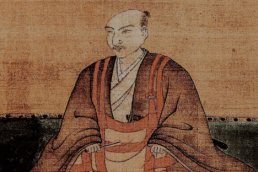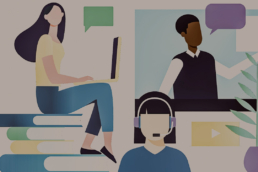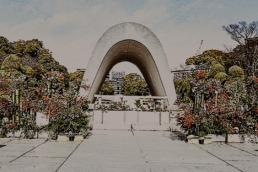Business Focus: the psychology of customer relations
The "Business Focus" column on Japan Italy Bridge continues and today we are talking about problem solving, communication and customer relations, also in Japan.
Problem solving: the psychology of customer relations, also in Japan
Understand who is in front of you. This is a lesson that I have been given personally and that I always try to carry on. What does it mean to really understand who you are dealing with? Surely it is the basis of every activity, both personal and professional, and if it were easy, everyone would succeed effortlessly in their work. It is not easy.
Only a few people manage to stand out from the masses and from the noise that, especially nowadays, is heard all too often. In the midst of the noise a voice, an attractive and loyal voice. The voice of someone who is willing to listen, but very carefully, to the needs of others. To build an audience you need this, along with a lot of intelligence to understand human behaviour.

photo credits: artplusmarketing.com
Attracting and keeping attention.
Let's talk for example, to make it more understandable, about the podcaster. The good podcaster not only has to attract his audience but also has to do his best to keep the listener's attention without shouting too much and without having voice drops that can lead to inattention.
Dreams must be created, needs must be met. Determination. Passion. Constancy. Consistency. One must never show anything that is contrary to the above factors.
Understand your own psychology
Before understanding others, you absolutely must understand yourself. In order to build an audience, one must first understand what we ourselves are inclined to do.
Are we able to communicate in the right way? Our job is to be among people, to attract customers, to care about our customers.
Are we not able to communicate well? Being in the "backstage" and in the "background", do you think it is bad or demoralising? No, it is not. Because most likely, the people on stage are only good at that and they should also learn how to build the show because the artist in question would not be able to do anything without a staff that creates the show from scratch.
In short, before you make yourself likeable by making an effort, the study to be done is very heavy and long and know that people notice your fake smile.
Don't risk what you are not! Whether or not you are able to understand others and therefore yourself, don’t go into what you are not suited to. Of course, you can always learn, but it takes a lot of time. It takes time to understand yourself and to understand others.
Let's take another example: my passion.
Having a passion and doing everything to pursue it is certainly very important, but to do it and do it well, you need to have the ability. Skills either come naturally or are learned over time. One thing I personally don't agree with is pursuing a passion without counting the rest, with your eyes closed. Often, unfortunately, this leads to not achieving the dream and in the worst cases, to the complete ruin of the path towards that dream. The opportunity can be misplaced, to cut a long story short.
Passion only follows commitment. To have passion you need commitment. Instead of following your passion, pay attention to what you find engaging.
Make yourself unique and don't do it just to attract someone or something, stay unique.
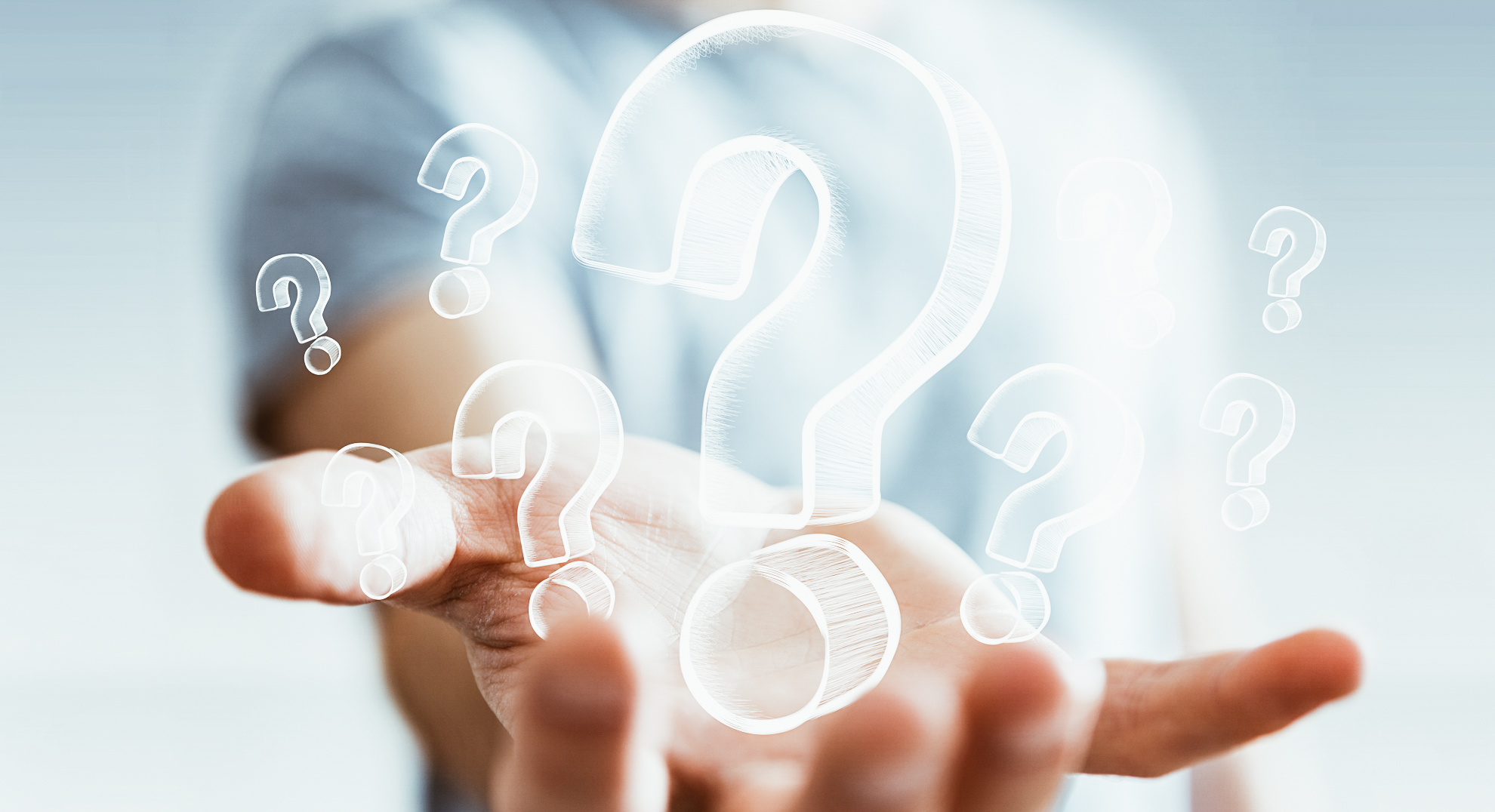
photo credits: theabp.org.uk
Build something unique and move forward by being unique.
Make it clear that you are willing to be a staple for your customer, make it clear that you are willing to solve their problem.
SBe their problem solver.
So what is problem solving? Let's look at this essential part of building an effective audience.
As we have already said, giving confidence and ensuring your presence at all times is essential. You should NEVER get the customer to say or just think "I can get by without this person". That way customers are lost. One must be able to become essential in solving a problem.
In our case, the problem might be the construction of an event or the constancy of staying alive socially. We want to be problem solvers, so we need to have the ability to:
- Recognise a problem
- Define a problem
- Determine the cause of the problem
- Establish priorities
- Select possible solutions
- Deciding on a solution
- Solve the problem

photo credits: 1985fm.com
To be effective as a problem solver, you need to train these skills above all:
- Intuition
- Common sense
- Lateral thinking
- Sensitivity
- Lucidity (be careful because this often clashes with the previous one)
- Understanding of limits
- Understanding of capabilities
- Decision making
- Constancy
- Consistency
It's not easy and some people are born with problem solving skills, but even if we don't have anyone in the team who can be a problem solver, we have two paths to take:
- Look for problem solving
- Become a problem solver ourselves
Of course, the road is not easy, because mind you, I did not say: Improvise Problem solving! It is not only very difficult but also not very productive.
And the client realises this most of the time.
Finding a purpose
The purpose must be personal and the lessons we are given must only be a help. Never take something someone else says as gold! As much as a person can be an important teacher, he/she must remain a guide, help in difficult times and be able to balance his/her psychology with yours. Yes, because what may work for someone can be completely useless for someone else.
And the client realises this.
Never listen to prejudices.
Although many times they may tell the truth, even more times they are bad advisors. We may be faced with a client who we don't "like" on the skin. How many times have I heard these phrases... these feelings, even though they are not to be thrown away completely, must not become predominant. let's make sure that the prejudice can remain as such (i.e. a judgement by feeling) and let's make it fragile, so fragile that it is then supplanted by judgement.
Build a very large network
Having a very large network of contacts is a very important help. In that way, among the many names, some may become clients, clients to be followed with constancy and over time so that prejudice is only a feeling that will then give way to judgement.
Then afterwards if you like you can also say "I told you so, I felt it!" it's ok if you like, but it's not required.
Be what you are, but hey I am not talking about being what you are despite everything. You have to be who you are but with a job behind you, you have to create a real awareness of who you are and then also have the honesty to understand the limitations of it, before someone else notices. Get help from those who have a greater capacity, and I'm talking about both backstage and frontman. Don't try to be something you're not, because if you really want to be something you have to put a lot of effort into it.
Be convincing
This, psychologically, leads to convincing yourself first. Don't try to convince someone else of something you don't believe!
They notice, trust me.
Work to convince yourself of something and then convince others. You will probably piss off quite a few people, but it will mainly be your competitors. The customer, the person you are problem solving for, will be by your side and will see you.
Be reliable
You have to be something known, something reliable. You must not run away at the first obstacle and you must be able to make yourself known. People tend very much to get involved with what is already known and fear the unknown. If you notice, we ourselves are attracted by what is known. We are usually more inclined to listen carefully to a song we already know, whose story we already know, than to a new one. Very often someone says to us, "Listen to it, it's beautiful, trust me!"
And the “trust me!” is the problem, because our mind is selfish and always tends not to trust, so then we will never listen to the song with the attention it has been asked for until it becomes part of our mind. Until we like it. This makes us realise how important trustworthiness is, how much we have to study and work to be, if not on a par with the mind of the client, as close as possible.
Just don't lose the essence of what made you fall in love, always think about that.
Modelling yourself for public perception
Always be yourself, it is said, do everything not to please others, but only please yourself. In this way, I would say you can even shut down and live in your own desert island without anyone bothering you. But if you want to deal with others, it is very important not only to have a good perception and knowledge of yourself but also to do everything to improve yourself so that you become an essential and indispensable part of the client. You have to be yourself, but with good work behind you. Because in a job with clients, it is essential to be able to relate to them and work to stay with them over time. Whether you like it or not, everything you create shapes people's perception and opinion of you. Unless you really like the desert island, at which point you can do without working while eating coconuts.
When you approach other people and want to work with other people, you have no other option but to live up to other people's expectations. Unfortunately, the belief that "we are us and we don't have to move a finger to be appreciated by others" is too common to be supplanted, but I hope with all my heart that sooner or later everyone's mind will open up to the possibility that we are not all the same and that the first ones we really need to work on are ourselves. Then we can think about approaching others and making good connections at work.
Being able to be problem solving also means being critical
Have the ability to understand where we are wrong and move forward by fixing the problem. We need to be our own problem solvers! Being critical also means having the ability to deal with criticism: finding the right explanation for unconstructive criticism and accepting constructive criticism. If they are called 'constructive criticism' it means that they are able to build something. You can spend your time feeding and paying attention to trolls and or you can spend your time creating something good and maybe only listen to what is constructive, the choice is yours. What you really need to avoid is the presumption, which, mind you, is quite different from confidence.
Conceit makes us blind, confidence makes us gain even more sight.
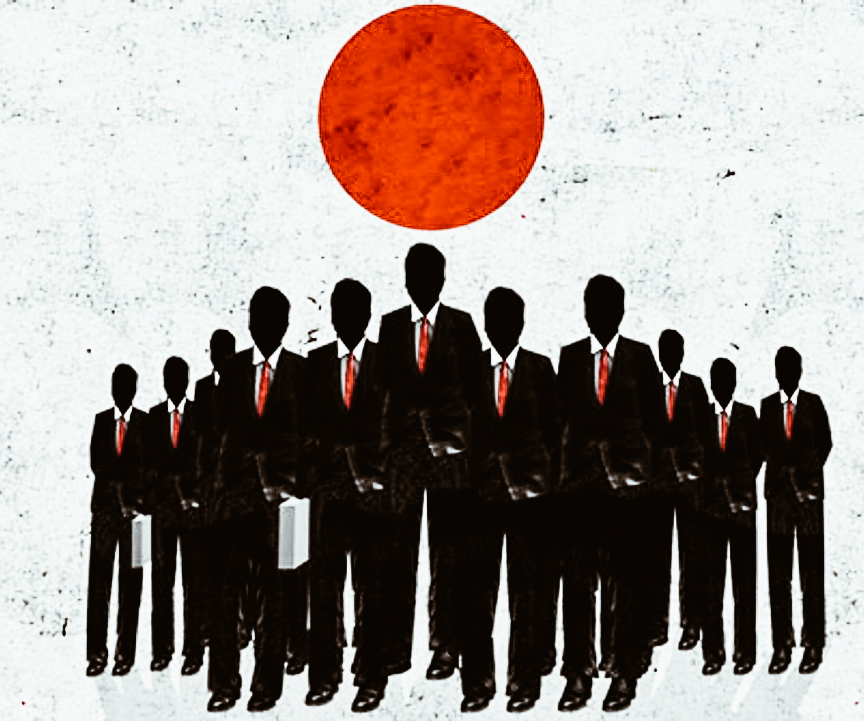
photo credits: economist.com
Open your minds
And here comes my moment, OUR moment. Closed-mindedness does not help anyone, not even at work. It closes not only our mind but also avenues and possibilities. We often don't approach someone else out of fear and lack of knowledge. Prejudices, stereotypes, all this closes us in the desert island and does not make us look beyond.
Looking beyond
We decided to work with Japan, but not without a lot of study and effort. We have shaped our knowledge and skills in order to get closer to these people. We have studied and are still studying the language in order to get closer to them, we want to understand them more and more so that we can become a real Problem Solver for them, which can remain so over time, which can be a support in times of difficulty that should not be there because we know how to avoid them from the beginning.
The difference in language, culture, habits... we have said that all this is frightening. But we have to fall in love with this language, this culture, these customs, everything that has been said so far. If there is no way of shaping your own mind and falling in love with all these things yourself, I would say there is no point in trying. If you realise that you are in love with it, then start working and begin to understand what the Japanese in question needs. Very often we have come across what we never expected: incredible similarities. Japan and Italy look very much alike, but these things are only perceptible to the eye of someone who wants to be an expert, someone who wants to improve, someone who wants to approach. As I have said before, we have to fall in love first, then make others fall in love and, in this case, our client.
You cannot please everyone, but strive to please those who deserve it, those you want to walk alongside both professionally and privately. Most likely you will be not only their problem solver but also and above all yours.
The beauty of a website, of a social, of everything that is communication is important and it is the work of the backstage. But it is nothing without the work of the frontman, the same can be said of the backstage. A well-staffed team is one that has both back and front stage, never forget that and, at the end of the day, the psychology of building an audience is not that different from psychology in general. If it applied to everything we live, maybe things would be better for everyone.
Fall in love, but really fall in love. Oh well, there are always coconuts...
Samurai flags at the Tokyo Olympics
Samurai are still very respectable and important figures, so as the Tokyo Olympics approach, a content producer is hoping to spark greater understanding between nations with anime characters wearing traditional Japanese clothing.
Flags of countries revised as samurai for Olympics
Author: SaiKaiAngel | Source: The Japan Times
Kama Yamamoto along with other artists launched World Flags in 2018 with the idea of helping people around the world become familiar with their cultures in a fun way and says, "I want the project to be recognised globally as something that can unite the world through anime and samurai."
Yamamoto's idea is to use characters in samurai or traditional Japanese clothing to illustrate different nations, their flags and increase interest in Japan.
Here are some examples:
the Peruvian character Vargas is depicted as a ninja in red and white carrying a leaf-shaped kunai and, in the case of Chile, the condor, which is the national bird, is perched on the shoulder of a samurai, while the Canadian character wears a red and white kimono with a maple leaf on its sleeve.
Yamada says a lot of work is underway to get the initiative officially recognised by the Tokyo Games organisers.
Yamamoto's background is in educational personification books; he has drawn manga characters to represent jobs ranging from tapioca shop owners to web designers. The books are aimed at children and include information on average salaries and what it entails to better inform children about the choices available to them when they grow up.

photo credits: The Japan Times
The educational purpose remains with World Flags.
There were about 80 characters on the website at the beginning of December, according to marketing producer at Digital Entertainment Asset Hiroshi Tsuruoka. The site is regularly updated with new personified flags.
Characters are introduced on the project's official Twitter page as soon as they are ready. With over 15,000 followers, the page also boasts fan art posted by those inspired by the characters.
However, characters can undergo both physical and "personality" changes in line with advice or criticism from people around the world, helping them to become more suited to the country concerned.
In one case, the Spanish flag, whose character is called Iniesta, was initially portrayed as a bullfighter, but was later transformed into a flamenco dancer following criticism that bullfighting was a controversial topic in the country.
The project got what Yamada called its first "big break" in the summer of 2019, when the Chinese flag depicting Aaron was widely shared online. Yamamoto soon began receiving interview offers from Chinese media, along with offers to create a range of merchandise e.g. mouse pads that are currently available online.
The characters are illustrated by a group of artists brought on board by Yamamoto, many from his previous projects.
"Some of the illustrations are by full-time artists, but others are drawn by people ranging from housewives to vets who draw as a hobby," he says. The flags are assigned by Yamamoto, who brainstorms a rough idea of the character design, to individual artists based on their illustration styles.

photo credits: The Japan Times
While Yamamoto works to finish personifying all the countries, a number of people from smaller nations have expressed delight at finding their respective flags in samurai form.
Some, including Mexico and Venezuela, have even received framed images of their personified flags at their respective embassies in Tokyo.
"We believe that an anime-style character representing Mexico can be an ideal way to convey the long-standing friendship that exists between the Mexican and Japanese people," Emmanuel Trinidad, the cultural affairs adviser at the Mexican embassy in Tokyo, said in an email.
"Every comment received about it on social media seems to praise the fact that the work goes beyond any stereotypical image and instead presents a fresh and more modern approach to the characters representing the countries in general."
The project was first published as a book last year, with illustrations of the characters and information ranging from national demographics to the number of Olympic medals won by the nation in question.
They would also like to turn it into an anime or superhero movie in the future, with the characters joining forces to fight an enemy to save the world.
"The story will not have a protagonist, and all the characters will work together for a common goal," says Yamada.
Yamamoto initially hoped to complete the project in 2020 ahead of the Olympic Games before they were postponed due to the new coronavirus pandemic. Now he is aiming to present around 200 personified flags by the end of this year. will he be able to achieve his goal of uniting countries with Japan? we are sure he will. Let's look forward to it and enjoy these works in the meantime!
Japan History: Asakura Yoshikage
Asakura Yoshikage (12 October 1533 - 16 September 1573) was a Japanese daimyō of the Sengoku period (1467-1603) who ruled a part of Echizen province.
Asakura Yoshikage, head of the Asakura clan
Author: SaiKaiAngel
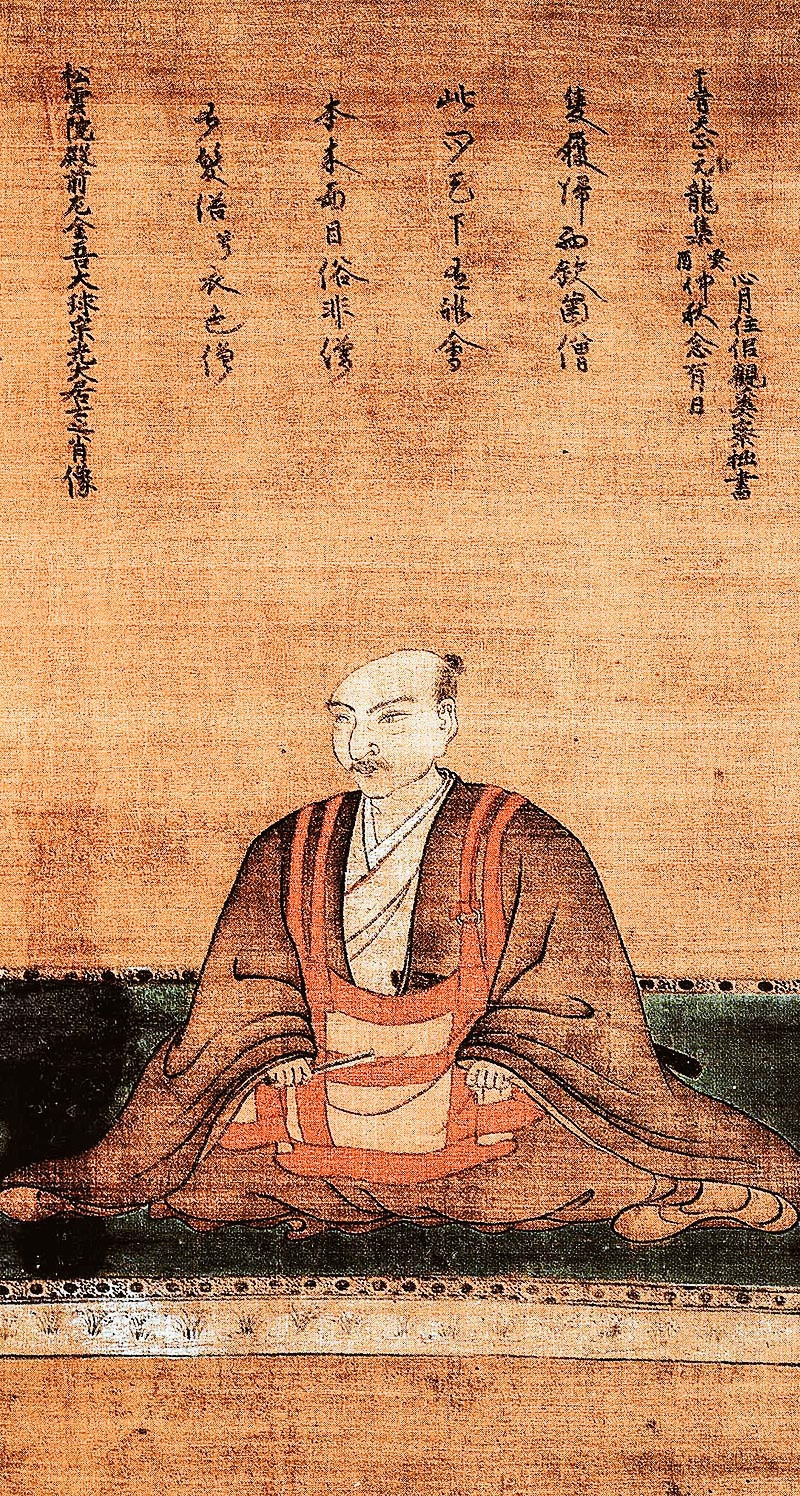
photo credits: wikipedia.org
Asakura Yoshikage was born in the Ichijōdani castle of the Asakura clan in Echizen province. His father was Asakura Takakage and his mother seems to have been the daughter of Takeda Motomitsu.
Yoshikage succeeded his father as head of the Asakura clan and lord of Ichijōdani Castle in 1548, demonstrating great skill in political and diplomatic management, especially through his negotiations with the Ikkō-ikki at Echizen. Thanks to them, Echizen enjoyed a period of relative peace compared to the rest of Sengoku-period Japan, becoming a place for refugees fleeing violence in the Kansai region. Ichijōdani even became a centre of culture modelled on the capital of Kyōto.
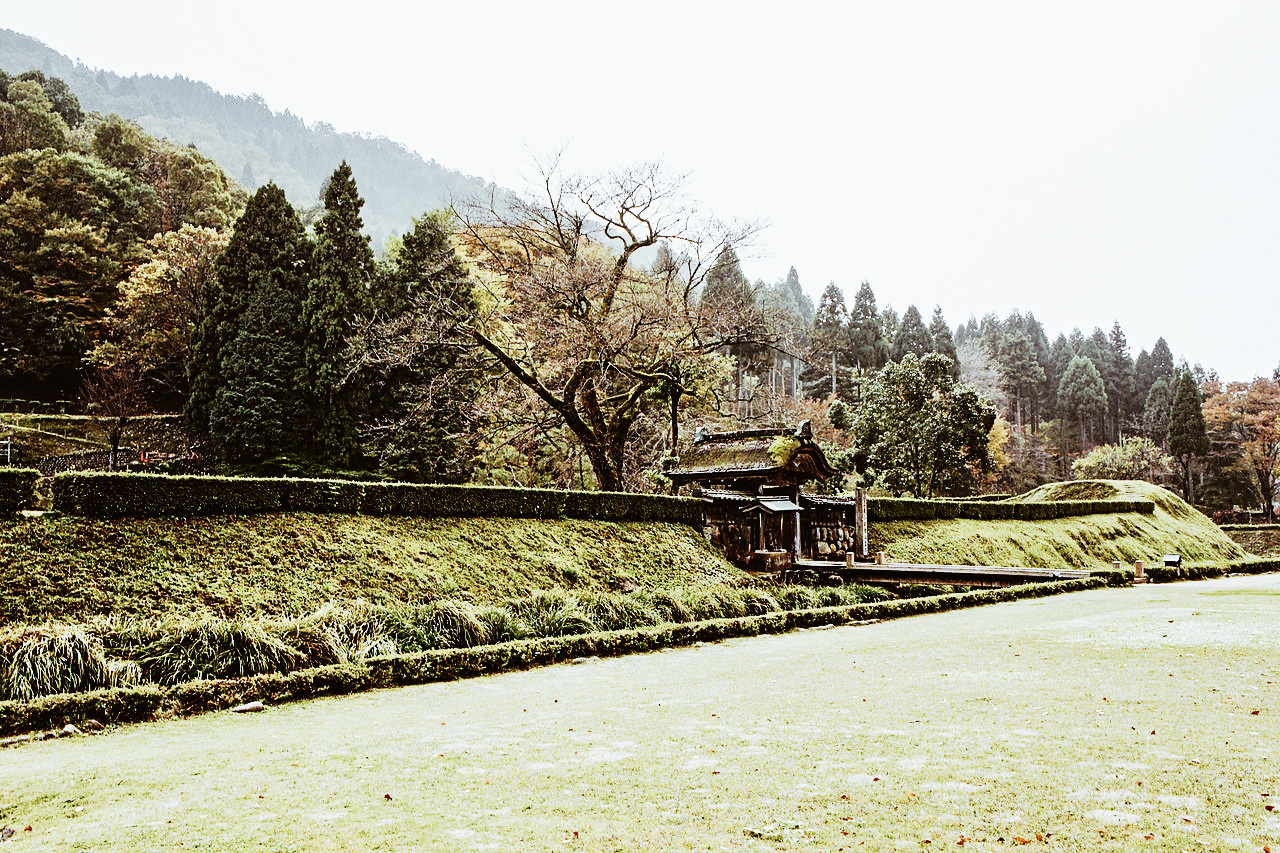
Ichijōdani Asakura Family Rovine storiche | photo credits: wikipedia.org
Conflicts with Oda Nobunaga
After his capture in 1568, Ashikaga Yoshiaki appointed Yoshikage as regent and enlisted the help of the Asakuras to drive Nobunaga from the capital. In 1570, Oda Nobunaga then invaded Echizen and succeeded in invading the castle due to Yoshikage's lack of military skill. Azai Nagamasa, Yoshikage's brother-in-law, attacked Nobunaga with the Asakuras at Kanegasaki, but Nobunaga withdrew his troops and managed not to be captured. At the Battle of Anegawa, Yoshikage and Nagamasa were defeated by the superior forces of the Oda and Tokugawa clans led by Nobunaga and Ieyasu.
Death
Yoshikage fled to Hiezan after the battle and attempted to reconcile with Nobunaga, which enabled him to avoid conflict for three years. In 1573, during the siege of Ichijodani Castle, Yoshikage was betrayed by his cousin, Asakura Kageaki, and was forced to commit seppuku at the age of 39. His death also destroyed the Asakura clan.
Business Focus: The importance of communication and marketing in Japan in times of pandemic
Communication has always been important in our lives and in this time of pandemic due to the spread of COVID-19, its essentiality has become even stronger. At a time when we are forced to forego hugs and physical proximity, what would we do without the Internet? Thanks to communication we can get closer to the rest of the world, our door is not closed thanks to the internet.
The importance of communication and marketing in Japan in times of pandemic
Autore: SaiKaiAngel

photo credits: mosaikoweb.com
The COVID-19 pandemic is certainly a very difficult time in which we are all involved, but we try to see the positive in this as well. What do they say? If you feel like you're in a tunnel, decorate it! So, while we are waiting to see the light at the end of the tunnel, we are trying to do everything to save our company and our relationships. The imposed lockdowns are very difficult to manage, but how much have they succeeded in making us realise the importance of the "small" things? I put the word SMALL in quotes, yes, because in this pandemic we have realised how BIG the SMALL things are. How special our normality is. How much we have looked for a hug, even if it is virtual, how much we have reinvented ourselves to keep alive a work project for which we have done so much.
Let's take advantage of this moment to start again even stronger than before, let's take some time to think, reinvent ourselves and prepare for total recovery.
Remember, however, that there are no miracles! You have to rely on the world of social marketing, but not alone. There are specialists in the field, people whose job it is to advise you and accompany you in the world of social marketing and communication without making you run into obstacles (like us).

photo credits: mosaikoweb.com
Never put your business activities on hold.
We are lucky enough to have the internet, why put a job or business on hold? The idea that one day the internet could go from being important to essential has been around for a while. We can attend meetings, we can organise, we can actually work together and stay in touch with our customers, all online. We can also focus on stepping up the content of our social media, of our websites, so that as soon as there is a chance to restart after the pandemic, we will be ready!
If our shop is closed, why take away the possibility of creating an e-commerce to continue selling our products? If we haven't felt the need to do so until now, we are now faced with this possibility, which is gradually becoming more and more important. If we can, let's try to build an online channel to communicate and continue our business! Let's also try to 'decorate' it as best we can.
Let's reinforce our corporate values and corporate image online!
Let us be seen, we have the opportunity! Let's not stop events, let's create them online and if we really don't want to do that, let's stop and organise the ones in presence, we have the possibility to do that, let's strengthen our communication network now!
Let's keep in touch!
Many children can continue to study and attend school thanks to Distance Learning, what we all know now as DAD. Is it important? Of course it's a help. If there wasn't this possibility of online meetings, children would surely be completely excluded from teaching and meeting their classmates. Instead, thanks to Distance Learning, students are able to interact with each other and maybe even distract themselves. Distraction in these moments of closure is very important, if there were no possibility to communicate online, we would really be locked out of the world. Perhaps now more than ever we realise how important online communication can be.
Still having doubts? Let's go and see what's happening in the rest of the world and especially in Japan, which has always been our focus.
The importance of communication and marketing in Japan in times of pandemic
Japan has always been very technological, it has always believed, almost more than anyone else, in the importance of online communication and marketing, and in fact it is now certainly at a better advantage than those who have stuck to tradition.
Japan lives with social networks in order to stay in touch with the rest of the world. Let's take a look at the most used social networks in this country with the relative percentages thanks to Statista:
- LINE 77,4%
- Twitter 38,5%
- Instagram 35,7%
- YouTube 23,2%
- Facebook 21,7%
- TikTok 8,1%
- Skype 7,1%
Il caso LINE


photo credits: google.com
As you can see from the statistics, if in the West we use Whatsapp, Facebook and Instagram more, in Japan they rely a lot on LINE and Twitter. Do you know LINE? It is considered to be the Japanese Whatsapp, and has around 84 million monthly active users in Japan (end of 2020 statistics).
What makes LINE so popular?
LINE was born in 2011 from a collaboration with Naver, a South Korean platform.
Immediately after the great earthquake in Japan in 2011, most conventional communication channels were disrupted due to power outages. Therefore, official sources turned to online to communicate the news and confirm the safety of friends and family. The app was released for public use later that year, and proved very appealing to Japanese consumers due to its unique and customisable design, allowing for both private and business use.
How do the Japanese use social networks?
Compared to neighbouring countries, Japanese people used social networks 65% compared to 88% in Taiwan and 87% in South Korea. In contrast, as of January 2019, Japanese internet users spent an average of 4.8 hours a day with digital content, while Japanese 18-34 year olds used up to six hours. According to a survey, the main reasons for using social media among the younger generation are the convenience of gathering and sharing information, as well as connecting with friends and colleagues.
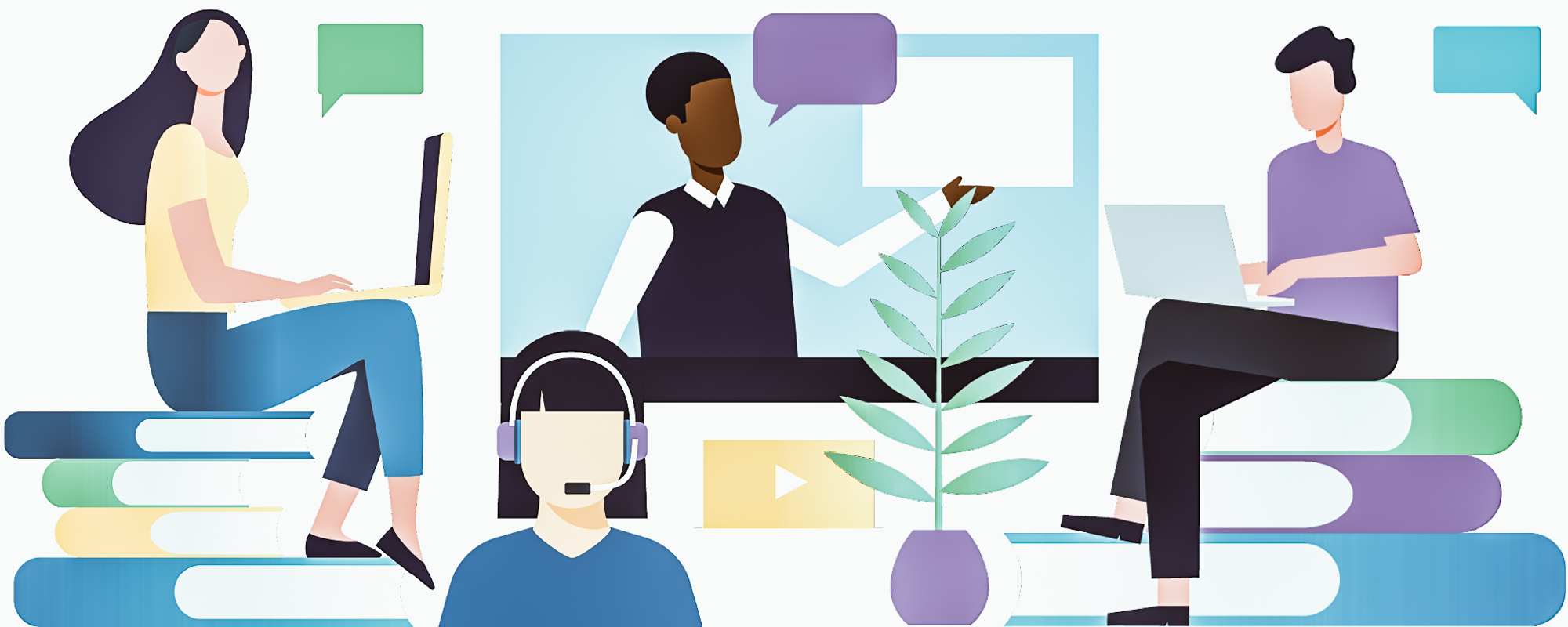
photo credits: epigeum.com
We have this moment to think about it and to reactivate as soon as possible. this has always been our job and now we finally realise that it has never been more useful. It was already before, but now it has become essential. We are ready to accompany you and are you ready for the (online) rebirth?
5 must-see destinations for 2021
We all need to feel free again, why not do it as soon as everything ends with special destination Japan? We are called Japan Italy Bridge, obviously we love Japan, but we recommend it to everyone. Those who have been there will want to return, those who haven’t are dreaming of going there.
The 5 destinations in Japan not to be missed according to Japan Italy Bridge
Author: SaiKaiAngel
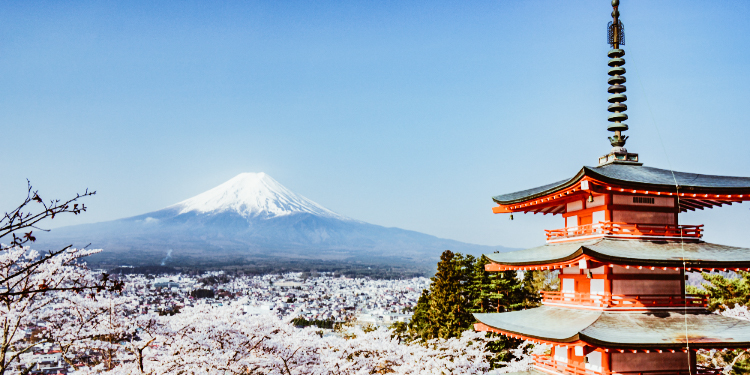
photo credits: expat.com
Japan should be seen and experienced, because each of its smallest part can give us something unique, can enrich us with experience and tradition, if you rely on the experts of JNTO you can go on the safe side! Japan is not only an unmissable destination, but it’s also completely safe, with all its attentions and precautions. With JNTO you will always be guaranteed the right distance, temperature detection in stores and places of interest, protections such as the mask. Safe, reliable and... absolutely dreamy.
You surely know the usual cities to visit, but this time we would like to show you other places that we particularly like. Are you ready? Start packing your bags for your dreamy and safe travels!
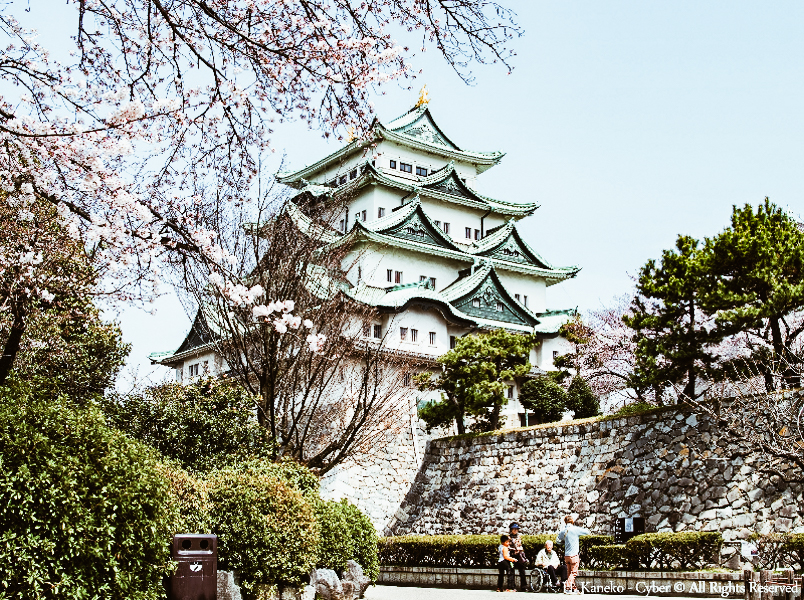
photo credits: viahero.com
Nagoya
Nagoya is a city in the Chūbu region of Honshū Island in Japan, with a port on the Pacific Ocean and two airports, including the new Chūbu-Centrair International Airport, which opened on February 17, 2005.
What to see in Nagoya
First and foremost, we believe the Atsuta Shrine is the most important. This shrine, founded over 1900 years ago is one of the oldest Shinto shrines in Japan. Here, for is kept the sword Kusanagi no tsurugi, one of the Three Sacred Treasures of Japan. This treasure, however, is not on display, but visible only to the emperor and a few monks. The shrine is located in a very serene forest to visit to relax.
Also, not to be missed is Nagoya Castle which was the residence of the Owari branch of the Tokugawa family, built in 1612 by order of Tokugawa Ieyasu. In spring and autumn, you can find a variety of flowers and plants absolutely unique in the world, are you curious to see them?
The Tokugawa Museum of Art is now where the residence of the Owari branch of the Tokugawa family once stood and collects and displays some of the family's great artistic heritage. The collection includes samurai swords and armour, costumes, tea ceremony utensils, books, maps and scrolls from the Genji Monogatari. Near the museum is a beautiful Japanese garden, the Tokugawa-en.
Osu Kannon Temple, on the other hand, is a Buddhist temple located in the centre of Nagoya. The temple houses a rich collection of ancient Japanese and Chinese texts.
Nagoya is home to very important museums, including The Railway Museum that exhibits ancient steam locomotives including the legendary C62 portrayed in the anime Galaxy Express 99 and the Toyota Museum of Industry and Technology that traces the evolution of manufacturing processes and aspects of industrial technology.
Kobe
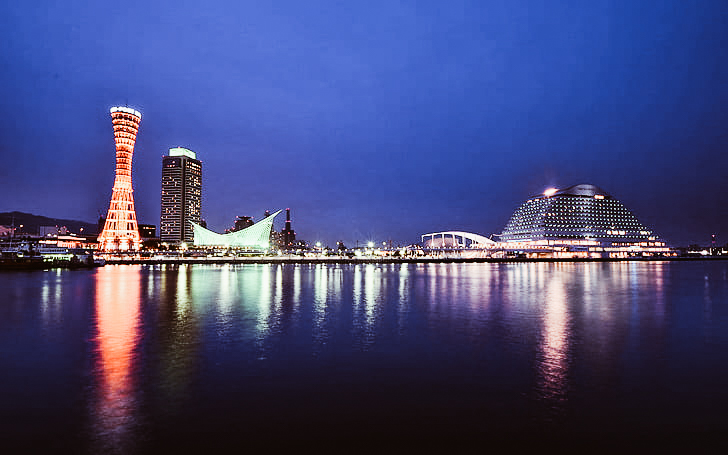
photo credits: wallpaperflare.com
Kōbe is located on the island of Honshū. For about six months in 1180, it was the capital of Japan, when Emperor Antoku moved to Fukuhara kyō, which was located in today's Hyōgo-ku city district.
What to see in Kobe
A place not to be missed and enjoyed completely is the Shin-Kobe and Nunobiki Herb Garden Cable Car that starts near Shin-Kobe Station. On the way up, you'll pass by the Nunobiki Waterfall and Nunobiki Herb Garden but the focal point of the ride is at the observation deck located right next to the top station, which offers spectacular views of Kobe both day and night.
Also take a trip to Sorakuen Garden which was part of the residence of Kodera Kenkichi, former mayor of Kobe opened to the public in 1941.
Nostalgia for parks? Meriken Park is a mix of nature and modernity. Along with the greenery, you can range up to a collection of modern art installations. In this park, you can find the red harbour tower and the Maritime Museum.
The Kobe Museum was opened in 1982, with collections from the Kobe Archaeological Museum and the Namban Museum of the Arts. The museum's permanent exhibition offers a collection of maps from different regions and eras of Japan, as well as artefacts representing Japan's trade with foreign countries.
You can't leave Kobe before making more than a quick trip to the Arima Onsen, a famous spa town in a natural mountain setting. Your relaxation is assured!
Delight your senses, delight your eyes as well at the Akashi Kaikyo Bridge. At over 4 km long, it is the longest suspension bridge in the World. The bridge connects the island of Honshu to the island of Awaji.
In Kobe, we find a museum not to be missed, the Earthquake Museum. On January 17, 1995, at 05:46, the city of Kobe was hit by the Great Hanshin Awaji Earthquake, causing the death of over 5000 people and the destruction of tens of thousands of homes.
The museum, which opened as a memorial in 2002, includes a large theatre with a screen that plays realistic images of the earthquake's brutality, and various interactive games on disaster prevention.
To end our visit to Kobe, let's enjoy a visit to the Sake Distillery! The Nada district in Kobe is the major sake production site in the region, due to its good availability of high-quality rice, suitable water, and favourable weather conditions for producing the alcoholic beverage.
Sapporo
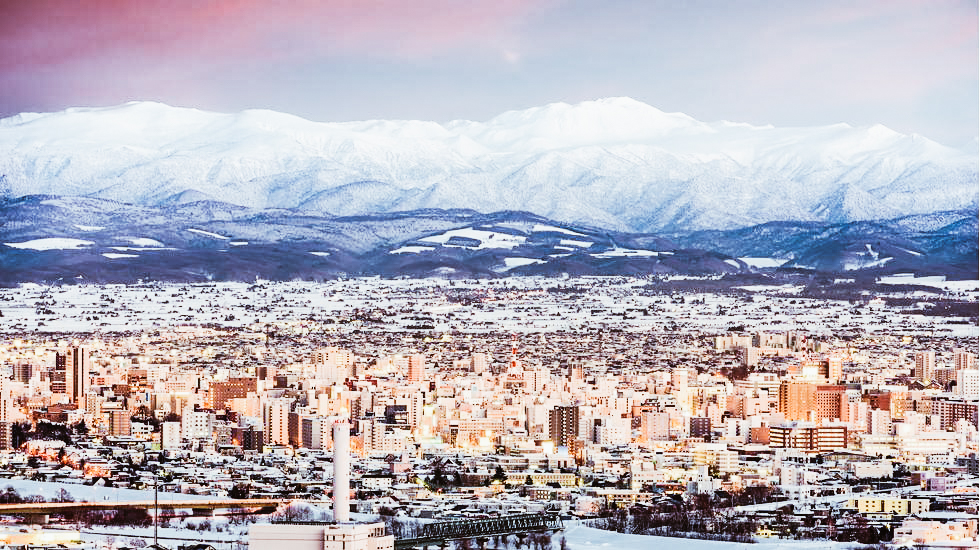
photo credits: suitcasemag.com/
Sapporo is a Japanese city, capital of the Hokkaidō prefecture, located in the southwestern part of the island of Hokkaidō, known for hosting the 1972 Winter Olympics, the first held in Asia, and for the famous Snow Festival that attracts over 2 million tourists from all over the world.
What to see in Sapporo
The historic village of Hokkaido
Of course, we start with the Hokkaido Historical Village, which is an open-air museum. 60 buildings from the past with various sections including towns and villages Don't miss these moments!
Instead, ìthe Sapporo Snow Festival (Sapporo Yuki Matsuri) takes place every February in Sapporo for a week. Born in 1950 when high school students started building snow statues in Odori Park, it is now a big event with spectacular snow and ice sculptures that attracts millions of visitors every year. In contrast, the Okurayama Observatory originated from the 90-meter ski jump used in the 1972 Winter Olympics! A must-see attraction, right in the Okurayama Ski Jump Stadium.
Want to relax after a long walk? Here for you is Moerenuma Park which is a park in the northeast of Sapporo surrounded by a swamp, a unique place that you definitely can't miss.
Here we are at the Hokkaido Historical Museum which documents the history of Hokkaido's development. You can find and see, in chronological order, the entire history of the prefecture from 20,000 years ago, to the post-war years after 1945.
Hungry? Shiroi Koibito Park is a chocolate company. Have you ever tried the Shiroi Koibito cookie? In case you've never tried it, it's two thin butter cookies with a layer of white chocolate in between. This is one of the top souvenirs in Hokkaido!
Thirsty? After chocolate, a good beer suits us perfectly, so we recommend the Sapporo Beer Museum.
In Japan beer was born in Hokkaido in fact, Sapporo is one of the oldest and most popular brands in the country. This beer is produced, precisely in Sapporo, in 1877 and is famous throughout the world, you will have happened to find it in restaurants here in Italy! The museum will show you the production process of beer and not only that! You can end the visit with a unique tasting!
Our visit ends in relaxation in the Botanical Garden that has a mainly didactic purpose, apart from being a pleasant break for visitors. In our opinion absolutely not to be missed, especially if you are looking for a moment of peace during the excursions and visits.
Kamakura
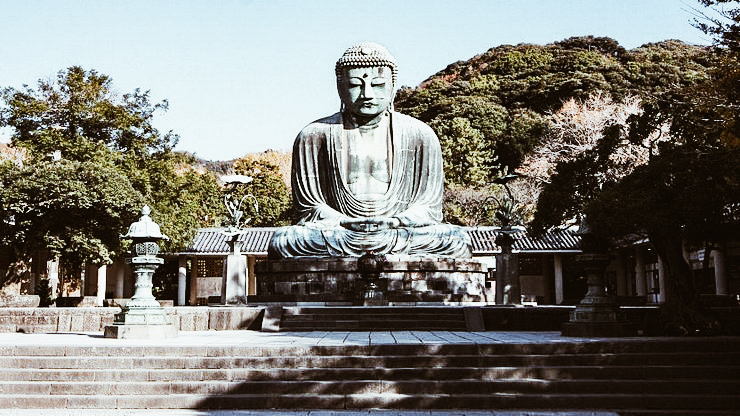
photo credits: japan-guide.com
This is a very important place that we at Japan Italy Bridge absolutely recommend. We are talking about Kamakura, a tourist and also seaside resort easily accessible from Tokyo. If you need a moment of relaxation during your trip to Japan, you can count on Kamakura.
Just think that Kamakura is facing the ocean, with its beach about 2 km long that takes two different names, Yuigahama Beach and Zaimokuza Beach. All around are hills and forests, crisscrossed by various trails. Among these is the Daibutsu path that leads from the great buddha to the Kita-Kamakura station, the Genjiyama path that starts from the Jufukuji temple and connects to the Daibutsu path, about at the height of the Zeniarai Benten temple, the Gionyama path near the Myohonji temple and the long Tenen path that connects the Kenchoji temple to the Zuisenji and Jomyoji temples.
During the Heian period it was the capital of the Kantō region and in 1192 the shogun Minamoto no Yoritomo moved his new capital here, transforming Kamakura din a real political centre of Japan.
What to see in Kamakura?
Kamakura is mainly known for its temples and altars and the one that we loved the most perhaps because of the bond that we feel towards this family of Samurai, is the shrine Tsurugaoka Hachimangu. The shrine is dedicated to Hachiman, the patron god of the Minamoto family and Samurai in general. On a terrace at the top of a staircase you can find the main hall with a small shrine museum, which displays various treasures such as swords, masks and documents. Next to this grand staircase, you could find a beautiful gingko tree that delighted visitors' eyes with its golden color every autumn, which unfortunately did not withstand a storm in 2010. Before entering the staircase, you can find the Maiden, a stage for dance and music performances.
The large statue of Amida Buddha, on the other hand, is located in the Kōtoku-in temple and is the most important statue in the country. Think that the temple in which it was located was destroyed during a tsunami in the fifteenth century, but the statue resisted and since then it is outdoors. The town is also home to the tombs of Minamoto no Yoritomo and Hōjō Masako. Engakuji Temple is one of the main Zen temples in eastern Japan, founded by the ruling regent Hojo Tokimune in the year 1282.
We move on to Hasedera Temple famous for its eleven-headed statue of Kannon, the 9.18-meter-tall goddess of mercy. The Kannon museum displays some of the temple's treasures, including Buddhist statues, the temple bell and a scroll. Also beautiful is the location of this temple, built along a wooded hillside quilted with small lakes.
As we said, Kamakura is the place of temples and shrines, so we point out other names to visit: Kenchoji, The Zeniarai Benten (very important for tradition if you want to wash your money!) and Zuisenji.
Obviously, there are restaurants where you can taste the delicacies of the place.
Hakone

photo credits: gaijinpot.com
Another must-see destination in Japan, in our opinion, is Hakone. Easily accessible from Tokyo, it is a place that can offer you not only relaxation, but also unmissable experiences. Here is our virtual tour of Hakone!
What to see in Hakone
The first thing to see is definitely Lake Ashi. We left our hearts on that lake and the panoramic view of Mount Fuji in the background. A real picture that you will carry inside you for a lifetime. This picture is among other things one of the hallmarks of Hakone. To experience Lake Ashi in all its beauty, you can cross it thanks to three vessels inspired by the ships of the eighteenth and seventeenth centuries. Special views, the important ports of Hakone, Machi and Porto Moto will make your moments unforgettable and you will feel part of that unique picture.
Always in the name of relaxation, remember that Hakone is the city of Onsen or hot springs. Today of the wonderful thermal centres, these Onsen will offer you the heavenly moment of relaxation, pampering all your senses. The Yumoto spring is the oldest and is located near Odawara. You are spoiled for choice, among the names we recommend is definitely Hakone Kamon, with its pools made externally of wood and stone.
After relaxing, it's time to visit the Hakone Shrine, Hakone Jinja which is located right on the shores of Lake Ashi. It consists of many buildings scattered in the forest, with a staircase embellished with lanterns that will make the walk a fairy tale.
Let's move on to the wonderful Odawara Castle built in the mid-fifteenth century in the hands of the Hojo Clan. We are in 1950 when Toyotomi Hydeyoshi defeated the Hojo Clan and reunited Japan. This castle is rich in history, three stories high seen from the outside and four inside. Inside the castle, you can see valuable period furnishings, armour and other items of historical interest and if you really want to enjoy a spectacular view, look at the whole city from the other in the highest floors! For Museum lovers, here is the Odawara Castle Historical Museum, with a very interesting interactive exhibition of objects related to the history of the castle.
On the other hand, the Gora Park is a French-style park with a large fountain, a rose garden and two greenhouses with tropical plants and flowers, a restaurant, a tea room and a Craft house, where you can try various workshops such as pottery making, glass blowing and ikebana composing.
After all that, what to do to extend your life? I'm not kidding, but I'm talking about Owakudani's black eggs. We are in a volcanic area famous for kuro tamago chicken eggs made black by cooking in hot springs. According to Japanese tradition, if you eat kuro tamago you will extend your life by 7 years! You will find them only in Owakudani!
Viaggiare il Giappone in sicurezza
Obviously, these are just some of the places that we propose, but Japan should be seen all. Each temple, each shrine, each garden is a world unto itself, something that cannot be found in other parts of the world. If you want to experience many different worlds in one place, you can't do without Japan. Thanks to JNTO, you can have a personalized and safe trip! With JNTO, especially in this moment of pandemic for COVID-19, you can explore Japan in absolute safety, visit the places you love without fear and in complete tranquillity. We like to repeat that with JNTO will always be guaranteed the right distance, temperature detection in stores and places of interest, protections such as the mask. Safety first and no risk, to enjoy a trip with a capital V do not be afraid and rely on JNTO! We have done it several times and we can assure you that the experience will be not only unforgettable but also in complete safety!
Also in collaboration with JNTO, don't forget the Hiroshima Hakken menu at TENOHA Milanoa! While waiting to leave, you can enjoy Hiroshima's specialties with this special TENOHA menu sponsored by JNTO Japanese National Tourist Board! This special menu that, with its sake tasting, will keep you company throughout January! The best sake in Hiroshima is here!

Night Emperor, Honshu ichi, Zoka, Itteki Nyukon, Sempuku Shinriki are the sake from Hiroshima that will remain available for you all January with the Sake Tasting! Here are their characteristics:
Honshu ichi
Night Emperor, Honshu ichi, Zoka, Itteki Nyukon, Sempuku Shinriki are the sake from Hiroshima that will remain available for you all January with the Sake Tasting! Here are their characteristics:
‘Zoka’
Junmai Daiginjo is made from "Yamada Nishiki" sake rice grown in a field located about 6 km north of the brewery, using Saijo underground water and the Hiroshima Mori technique. The delicate aroma and sweetness of the transparent and gentle rice harmonize perfectly with the fresh acidity. You can enjoy it cooled with a thin cup or glass of wine. Sake certified with Saijo JAPAN brand)
Itteki Nyukon
This sake has as first material the rice suitable for its preparation. A slightly dry Junmai Ginjo sake that goes well with foods with the right acidity, good both cold and hot.
Sempuku Shinriki 【Nickname】Filled with happiness
Kamiriki rice, which is the origin of Chifuku, is 85% processed and is close to the processing speed of rice from the Meiji and Taisho eras. A bottle full of feelings for the preparation of sake, especially suitable for people who particularly care about Japanese sake.
Night Emperor
Night Emperor is a mixed Hachitan Nishiki based liqueur produced in Hiroshima Prefecture. Versatile liqueur is easy to combine with any dish. Soft taste that takes advantage of the characteristics of fresh water preparation and keeps the alcohol content low while maintaining the taste of koji and rice. Good tasted both cold and hot.
Start planning your trip to Japan and while you're doing it, enjoy the special Hakken of Hiroshima at TENOHA Milano for the whole of January! As you can see, JNTO is close to you at all times, reminding you that Japan is a destination that will give you all the security you are looking for!
Japan History: Ankokuji Ekei
Although Ankokuji Ekei (1539 - November 6, 1600) was a member of the Aki Takeda clan, his year of birth and his father are still uncertain. His year of birth varies from 1537 to 1539 and whether his father could have been Takeda Nobushige or Takeda Shigekiyo.
Ankokuji Ekei, samurai, monk and diplomat
Author: SaiKaiAngel

photo credits: samurai-world.com
When the Aki Takeda were destroyed in 1541 by Mori Motonari, Ankokuji Ekei was taken to a safe place in the temple of Ankokuji, which was located in the province of Aki.
At that time, Ankokuji Ekei changed his life becoming a Rinzai Buddhist monk and also a diplomat of the Mōri clan. It was the year 1585 when Toyotomi Hideyoshi praised his negotiations when the Mori clan formally served Hideyoshi. As Hideyoshi's advisor, he even received a feud of 23,000 koku in Iyo province as a reward after the invasion of Shikoku (1585).
In 1586, after the Kyushu Campaign, his possessions were expanded to 60,000 koku. He participated in the war of Imjin, the Siege of Shimoda and lost the battle of Uiryong against Gwak Jae-u.
Despite being a great priest, Ekei led the men for both Hideyoshi and Môri Terumoto. Ankokuji Ekei was present at the Siege of Shimoda in the Odawara Campaign (1590) and in the Korean Campaigns (1592-93, 1597-98) in Terumoto's staff.
In 1600 Ekei joined Ishida Mitsunari and exerted considerable pressure on Môri Terumoto, eventually prevailing on the advice of Kikkawa Hiroie. In the battle of Sekigahara, Ekei commanded 1,800 men on Nangu Hill, positioned near the troops of Hiroie and Natsuka Masaie. When the main armies were engaged around the village of Sekigahara, Ekei and the troops of Môri (commanded by Môri Hidemoto) decided to enter the fray and waited for Hiroie, the vanguard of Môri, to move. Unbeknownst to them, Hiroie had negotiated a secret agreement with Ieyasu and had no intention of moving.
Ekei and the Tokugawas
Ekei and Natsuka had no intention of doing anything so the 25,000 soldiers under Môri command remained inactive. This inactivity sealed a defeat that became devastating after the betrayal of Kobayakawa Hieaki, and once the matter was clearly decided, Ekei and his comrades thought it was better to retreat in a hurry.
Ekei tried to flee to To-ji, but was captured according to legend by a rônin who had an old grudge against him. Tokugawa sentenced him to death on Kyoto's Rokujo-ga-hara, and was beheaded together with Konishi Yukinaga and Ishida Mitsunari.
Business Focus: Digital events during the pandemic
In 2020 we had a very special year and also for those who like us work in marketing there was an invasion of digital events. We experienced new ways to stay in touch, new ways to embrace each other, new ways to study and work. These are not ways of living and working that we should never have known, on the contrary! The year 2020, said in a very positive way, has accelerated many of these processes. What can the positive pandemic bring us? Surely, looking at the situation, we can answer with "very little", but let's try to look beyond everything.
Digital events: opportunities during the pandemic
Author: SaiKaiAngel
Did this 2020 make the leap into the future shorter? Definitely yes! As for us at Japan Italy Bridge, for passion or need, we made sure to stay afloat and continue to present our proposals ... online!
Anyway, we were already organized and prepared for this, considering the sentence we always said when introducing ourselves as "The future is online". Now, we are sure that that phrase, which we were waiting for it to become our daily heritage maybe in a while, has suddenly become customary good from this moment! We at Japan Italy Bridge are committed, waiting to be able to physically embrace you again, to build and propose digital events and situations that can give you emotions, if not equal, but similar to physical ones.

We have experienced, during the lockdown, many online events such as school, work, webinars, meetings, often seeing them as something new and more exciting than the online presence. Why? Simply because we are facing something new. Before we get used to this too, let's try to exploit the enthusiasm in all its essence.
Digital Events
Let's talk about online events, for example. Yes, because apart from the online work we have always done, events were the only thing we kept offline and based only on the presence of people. While waiting to do it again, we looked for online solutions that could actually, for the moment, create if not the same enthusiasm, something similar.
How do you organize an online event?
First of all, you have to focus on the guests, just like the event in the presence, nothing changes! You have to identify the people who might be interested in that event and become an interesting link for companies that want to communicate their work to others.
What is the main goal of the online event?
The online event, like the offline one, is to reach as many interested people as possible. You have to make sure that you create the right platform and the right place for them to best facilitate their presentation and communication with other participants. The online event, therefore, becomes a favourable place to exchange opinions that can then become a tool for the contact between companies. One of the positive things we find in this is the reduction of organizational costs. It then becomes completely free without any problems of audio, lighting, culinary entertainment. The most important thing is to have a platform capable of holding and maintaining the event without problems and, certainly, a good connection. Among the most popular platforms are zoom and meet.
Another absolutely essential thing is the ability of the event's creator to entertain guests by ensuring that spaces and moments can be respected. In this case, we need a good "host" who is not very different from those we see on TV programmes. The presenter must be able not only to ensure that the times are respected but also to keep the enthusiasm high for the entire duration of the event, intervening when the situation fades away or when it becomes too bright. Nothing so different from the offline event, in short. This is proof that the creator of the event is part of a consolidated company capable of dealing with any type of situation.
At Japan Italy Bridge, for example, we focus on creating a bridge, as our name suggests, between Japan and Italy. Until this bridge can be built physically, as we have already done with our previous events, two random names "Japan meets Italy" and "Spindle". we are very keen to keep the interest and communication between these two nations high. For this reason we have studied how to make our events online and interesting.
Obviously, one of the things we think may be essential for a digital event, is not the payment, but at least the registration. Registration will allow us to have a closed list of participants and a beginning of moderation. The registration should at least contain the basic information: name, surname and an email to be contacted. In this way, you will be able to have not only a certain moderation of the event, but also a way to communicate suitable for your profile. The guest will not find a bedlam of people who are not interested in anything about the event, but only and only guests interested and enthusiastic to participate, listen and share.
Listening and sharing
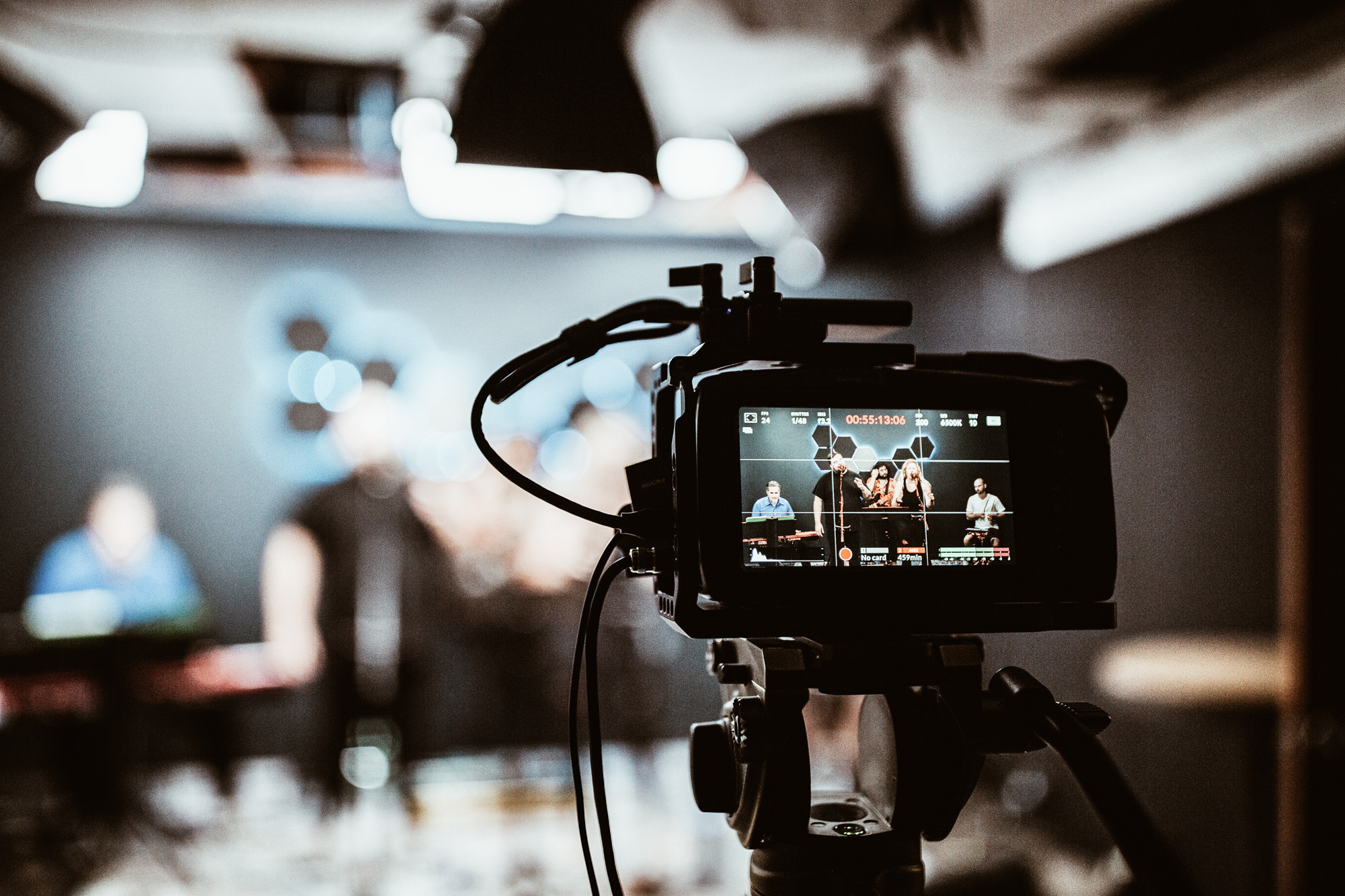
Let's not go so far from the offline event, in this case, the focus is always the same: finding people and companies interested in sharing. We all know how difficult it can be to connect companies of different nationalities, but we are also sure that Japan and Italy have a lot to share and feel united, otherwise, we would not do this job!
The online event should not be scary, if we look at this carefully, we will realize that it is not so different from the event in presence.
So what do we need to create an online event?
- Identify people and/or companies that might be interested in the event.
- Create the right environment to facilitate communication between them, perhaps by establishing a dialogue first.
- Leave the guests in the right place and moderate the time available to them in order to make it the same for everyone.
- To have a good interlocutor and manager of the event that can enforce time moments and keep up the enthusiasm of the audience.
- To have the conviction to do the right thing, without being frightened by the difference between offline and online.
Whether it is on a digital platform and in presence, many things remain the same, one of which is enthusiasm.
Never lose your enthusiasm, it is what will allow you to live properly at any time, making the waiting less heavy and above all fruitful. You will learn to "feel" the enthusiasm of the other person and also to create new connections. make it a new challenge!
As for us at Japan Italy Bridge, we are ready to continue to build this bridge also digitally and then continue to do it in person.
Hiroshima, a prefecture waiting to be discovered
Japan Italy Bridge promotes Japan and creates a real bridge between Japan and Italy and today we focus on Hiroshima. The Japan National Tourism Organization promotes tourism and this month focuses on Hiroshima prefecture. Let's give a more in-depth look.
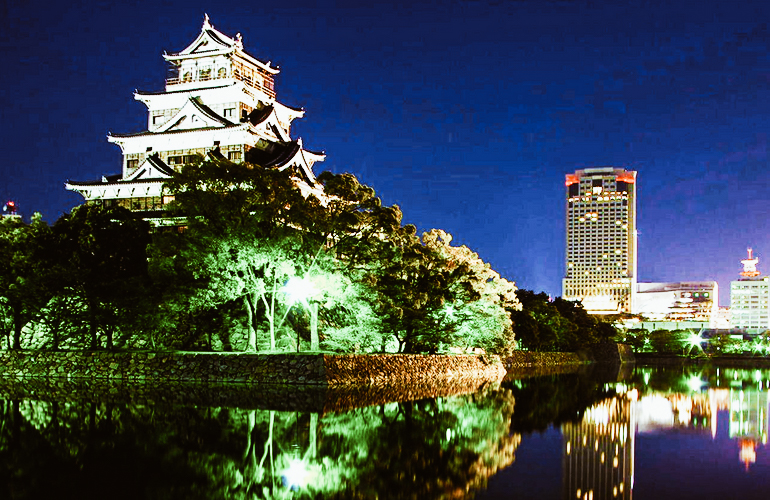
Hiroshima, a prefecture waiting to be discovered
Author: SaiKaiAngel
History

photo credits: un.org
The city of Hiroshima was founded in 1589, during the feudal period Sengoku by the Japanese daimyō Mōri Terumoto who made it the capital of his feud. After the battle of Sekigahara for territorial possessions, Terumoto had to surrender Hiroshima to the winner Tokugawa Ieyasu, who decided to have it administered by the daimyō Fukushima Masanori.
In 1871 the city became the capital of the homonymous prefecture and an important commercial and naval centre of Japan. At the end of the 19th century, Hiroshima witnessed further industrialization, which culminated with the war facilities erected during the Russian -Japanese war of 1904, and became Mazda's headquarters in 1920. In 1938 it became part of the broader war scenario of the Second World War. Unfortunately, on August 6, 1945, at 8:16 and 8 seconds, the bomb called Little Boy exploded at 576 meters, with a power equal to 12,500 tons of TNT. The nuclear explosion killed about 260,000 people and injured more than 160,000 in the months immediately following due to radiation.
The Territory
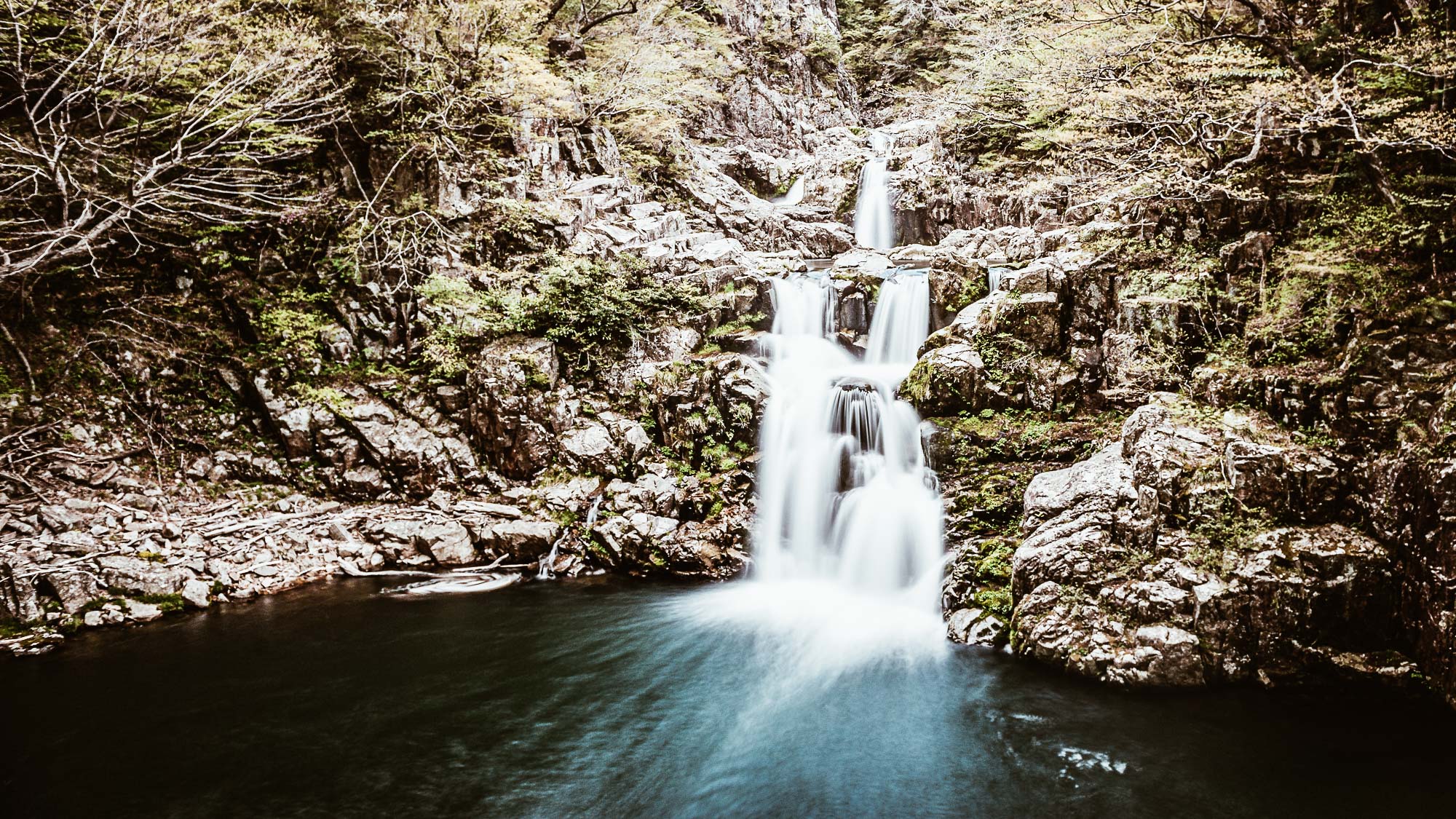
photo credits: locationscout.net
The centre lies on the harbour bay towards the sea of Aki-nada and the territory is hilly. Hiroshima has many islands such as Etajima-Nomi and Itsukushima and, inland, the territory becomes rockier with the Gosasou and Shiraki mountains as a road to the Ota River.
As JNTO also explains and assures, you can explore Japan in absolute safety! Visit Hiroshima without fear and in complete peace of mind, you will always be guaranteed the right distance, temperature detection in shops and places of interest, protection such as the mask. Do not risk anything, as the first interest of the person and the tourist there is always safety in every place.
Take advantage to visit this beautiful prefecture that gives us not only great emotions but also enchanting places that you will remember forever. Despite the tragedy caused by the explosion of the atomic bomb, Hiroshima had doubled its pre-war population in 1974 and was considered the "peace capital" of the world. Hiroshima is home to important attractions to visit absolutely, let's see them in detail.
Hiroshima Peace Memorial Park

photo credits: theplanetsworld.com
Symbol of the need for eternal peace, it commemorates the numerous victims of the first nuclear attack and is located right in the epicentre of the explosion. Hiroshima Peace Memorial Park boasts many important monuments, museums related to the events of that day and its consequences. In addition to the beautiful gardens with their cherry blossoms, we find the Peace Memorial Museum, the Memorial Cenotaph, the Flame of Peace, and the Atom Bomb Dome with the ruins of the old Chamber of Industry and Commerce. A very interesting place is the Children's Peace Monument and the Monument to the victims of the Atom Bomb.
Shukkei-en Garden
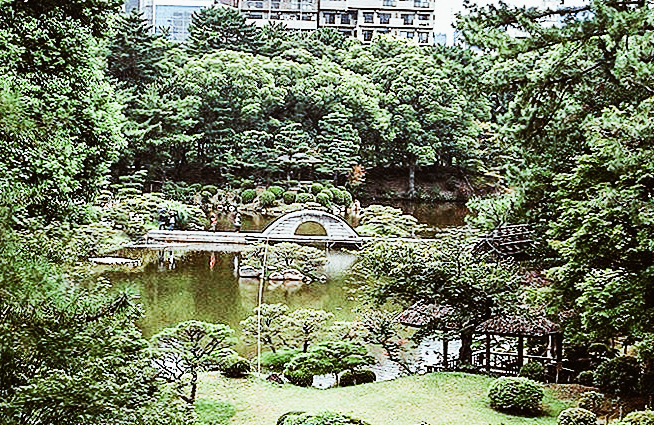
photo credits: theplanetsworld.com
The Shukkei-en Garden is a wonderful garden on the banks of the river Ōta. A space of peace and quiet desired by Asano Nagaakira in 1620. This garden was once the home of Emperor Meiji, and after the damage caused by the explosion in 1945, they literally flourished again in 1951 in all their beauty. The gardens opened to the public after being donated to the city in 1940 and, despite the heavy damage caused by the 1945 nuclear attack, the gardens reopened in all their former glory in 1951. Bridges, paths, a true landscape of calm and relaxation pampered by the sound of streams that draw from the river Ōta.
Hiroshima Peace Memorial Museum
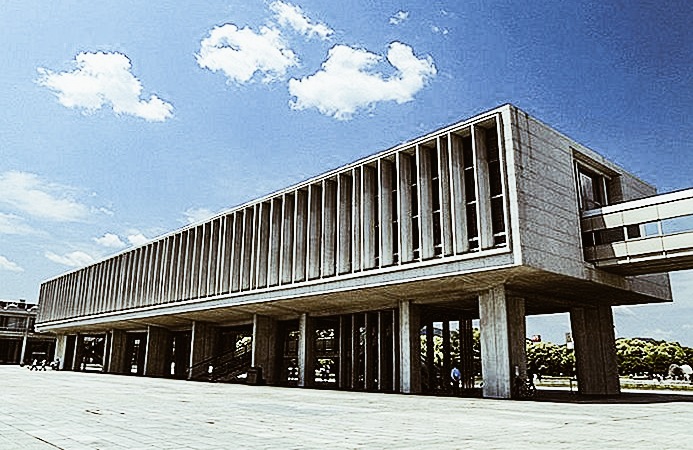
photo credits: theplanetsworld.com
The exhibitions focused on the explosion of the atomic bomb of the Peace Memorial Museum are very hard and very painful and are exhibited together with exhibitions that extol world peace. This museum is one of the sites that cannot be missed during your trip to Japan, both to experience the rebirth of a prefecture and to pay homage to those who lost their lives during the terrible bombing.
Hiroshima Castle

photo credits: theplanetsworld.com
The Castle of Hiroshima (Rijō), also known as Carp Castle, was the residence of Fukushima Masanori and then passed into the possession of the famous Asano Nagaakira in 1619. In the castle and in particular, in the tower, there is a museum about the history of the castle with images of Hiroshima. In the castle, we can also find three trees that survived the atomic bomb and a bunker used for radio transmissions after the explosion.
Itsukushima island sanctuary
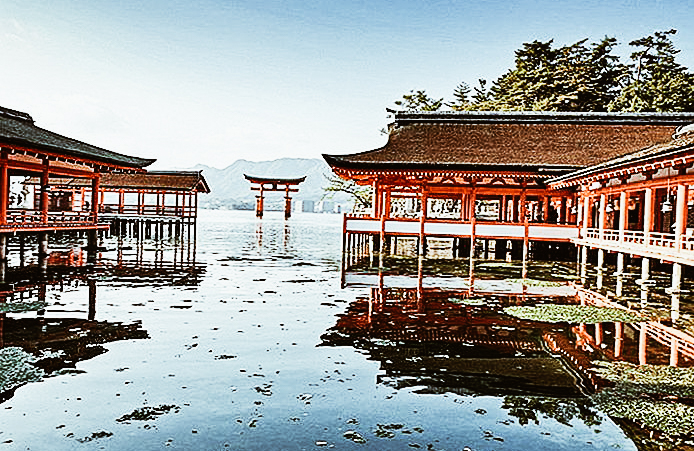
photo credits: theplanetsworld.com
Miyajima, the Sanctuary Island, is famous for the sanctuary of Itsukushima, dedicated to the princesses Ichikishimahime, Tagorihime and Tagitsu-hime, daughters of the wind god Susanoo. The buildings with the high tide, seem to float magically on the water because they are located on a bay supported by stilts. The show is not to be missed, a feast of colours, red wooden structures and white walls. Honden (Main Hall), Heiden (the offering hall). Haiden (the prayer hall), Senjokaku (the Hall of a Thousand Carpets) and Takabutai used for the Bugaku and Kagura dances are the places you cannot miss during your visit to Hiroshima.
Memorial Cathedral for World Peace
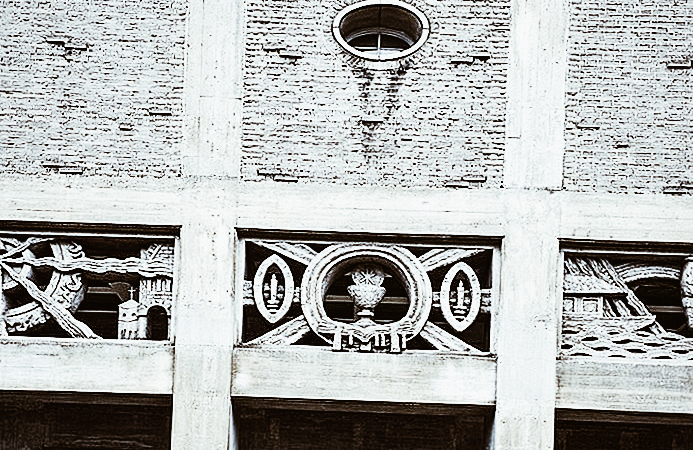
photo credits: theplanetsworld.com
The Memorial Cathedral is one of the largest churches in Asia, built in 1954 by German Jesuit priest Hugo Lassalle from a design by Japanese architect Murano Tohgo. The Memorial Cathedral has four bells in the 46-meter tower, an organ provided by the city of Cologne and the bronze doors of Düsseldorf.
The Mitaki-dera temple

photo credits: theplanetsworld.com
One of the most beautiful temples in Hiroshima is Mitaki-dera. Built in 809 and rebuilt after the war, it is also famous for its beautiful gardens, which in autumn give a fiery red show to visitors. Also known as the Temple of the Three Falls for its location at the foot of Mount Mitaki, the temple is famous for its red lacquer pagoda, Tahoto and waterfalls.
Fudoin Temple

photo credits: japanvisitor.com
Another beautiful place to visit is the Temple of Fudoin, the architecture of the Muromachi period between the 14th and 16th century with a large main hall containing a carved statue designated as a national treasure.
Hiroshima museums
The city of Hiroshima and the whole prefecture are also famous for the many museums in the area. Below are the ones that we believe are unmissable on your trip to Hiroshima.
Hiroshima Prefectural Art Museum (Hiroshima Kenritsu Bijutsukan)
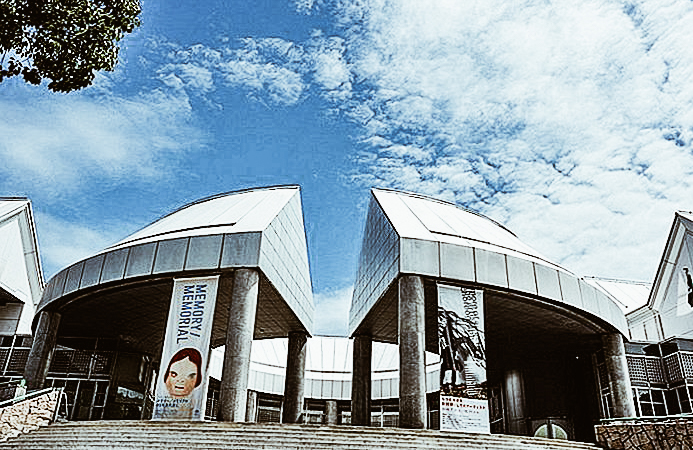
photo credits: theplanetsworld.com
This Museum, opened in 1968, focuses on local artists with collections related to the atomic bombardment and a children's gallery.
Hiroshima Museum of Art
The Hiroshima Museum of Art consists of eight world-class art galleries. We can find the collection of paintings by European masters such as Monet, Renoir, Degas, Maillol and Picasso together with leading Japanese artists such as Ryohei Koiso and Yuzo Saeki.
Hiroshima City Asa Zoological Park

photo credits: japantravel.com
Opened in 1971, the Asa Zoological Park is about 124 hectares large and is home to 170 species of animals, like minor pandas, Japanese giant salamanders, lions, giraffes and rhinos. A place to distract yourself from the other important places in Hiroshima and to entertain the mind, not only for children but also for adults!
Food and beverage
Obviously, with such an interesting trip, we can't forget to eat and drink and that's why Hiroshima gives us unique experiences here too! Not to be forgotten are five famous Sakaguras from Hiroshima thanks to which we can enjoy exceptional sake. Read carefully here for a unique experience in the Japanese tradition.
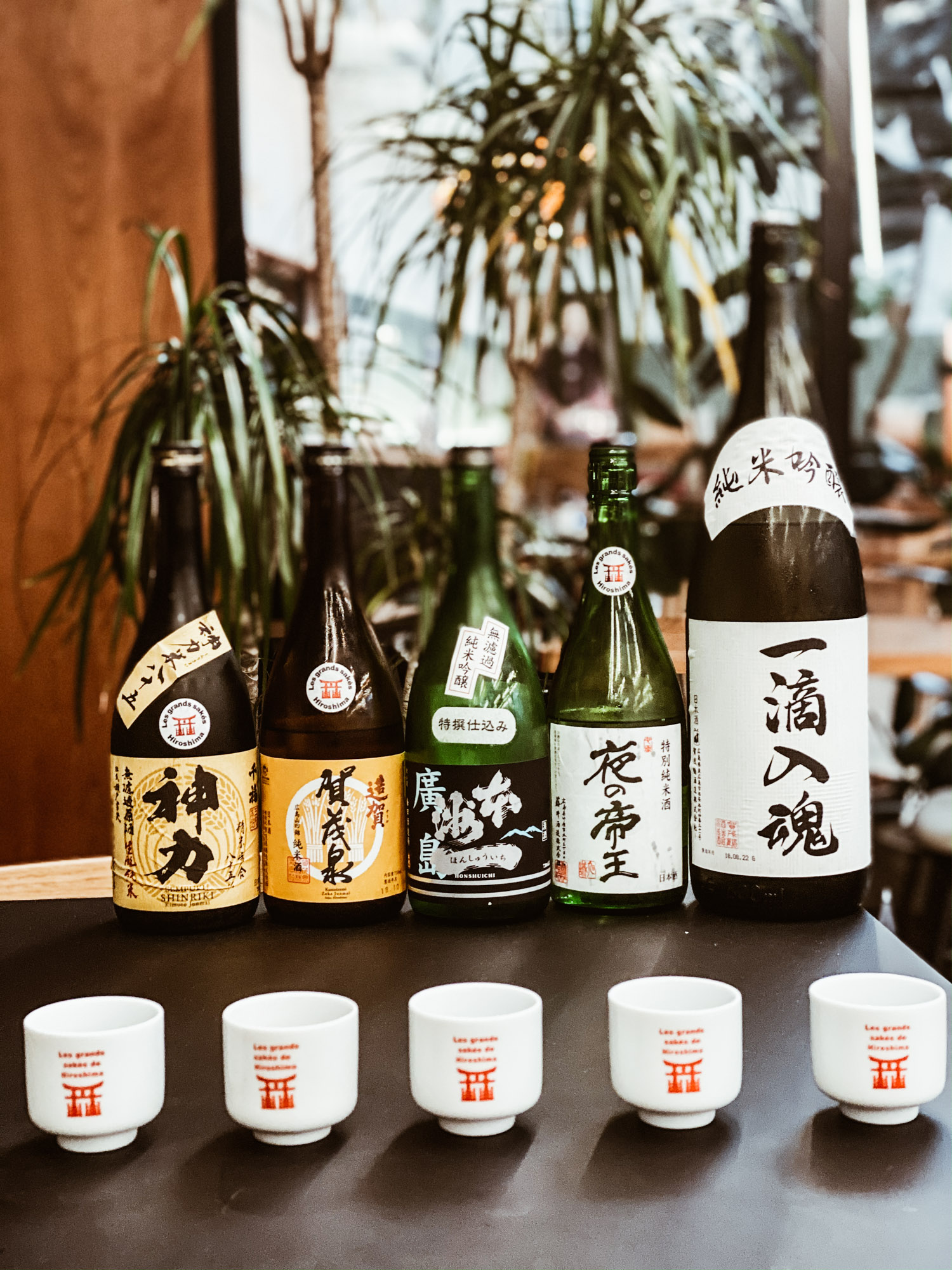
Honshu ichi - Brasserie UmedaCo., Ltd.
Category】Junmai Ginjo
【Ingredients】Rice, Koji rice (Senbon Nishiki / Hiroshima product)
【Polishing ratio】60%
【Alcohol content】 16.8 °
【Glucose density】 1.8
【Acidity】1.7
【Sake Gradation】 +5
【Aroma】Sweet fruity aroma
【Pairing】Fish in general, chicken, sweets with strong flavour such as cheesecake
【Features】
A Junmai Ginjo Sake produced by Hiroshima Prefecture, preparing "Senbon Nishiki" rice with Hiroshima Ginjo yeast. It is characterized by the fruity aroma of Ginjo sake, slightly sweet taste. It can be enjoyed with fish and cheese dishes.
‘Zoka’ - Kamoizumi Shuzo Co., Ltd. 創業 1912年 founded in 1912
【Category】Junmai
【Ingredients】Rice, Koji, Water (Rice: Yamadanishiki/100% Higashiroshima )
【Polishing ratio】65%
【Alcohol content】16°
【Glucose density】2.0%
【Acidity】1.8
【Sake Gradation】±0
【Aroma】Sweet chestnut, with a strong smell of rice and wheat.
【Pairing】Boiled tofu, sweet with citrus fruits, marinated food.
【Features】
Junmai Daiginjo is made from "Yamada Nishiki" sake rice grown in a field located about 6 km north of the brewery, using Saijo underground water and the Hiroshima Mori technique. The delicate aroma and sweetness of the transparent and gentle rice harmonize perfectly with the fresh acidity. You can enjoy it cooled with a thin cup or glass of wine. Sake certified with Saijo JAPAN brand)
Itteki Nyukon - KamotsuruCo., Ltd.
【Category】Junmai Ginjoshu
【Ingredients】Rice, Koji rice(100% Hiroshima rice)
【Polishing ratio】60%
【Alcohol Gradation】15 - 16 °
【Glucose density】1.0
【Acidity】1.6
【Sake Gradation】+3
【Sweet】Aroma
【Pairing】Sauté of chicken, Gelée of white peaches
【Features】
This sake has as first material the rice suitable for its preparation. A slightly dry Junmai Ginjo sake that goes well with foods with the right acidity, good both cold and hot.
Sempuku Shinriki 【Nickname】Filled with happiness - Brasserie MiyakeCo., Ltd. Sempuku Shinriki
【Category】Saké Daiginjo
【Ingredients】Rice, Koji (Shinriki) rice
【Polishing ratio】 85%
【Alcohol content】 19.0 °
【Glucose density】 1.2
【Acidity】2.3
【Sake Gradation】 +5
【Aroma】Mature aroma, almond
【Pairing】Sukiyaki, Steak, Cheese, Chocolate
【Features】
Kamiriki rice, which is the origin of Chifuku, is 85% processed and is close to the processing speed of rice from the Meiji and Taisho eras. A bottle full of feelings for the preparation of sake, especially suitable for people who particularly care about Japanese sake.
Night Emperor - Fuji Shuzo
【Category】Junmai
【Ingredients】Rice, Hattan Nishiki Koji, Water
【Polishing ratio】65%
【Alcohol content】 15 °
【Glucose density】N/A
【Acidity】1.6
【Aroma】Moscato, walnuts
【Sake Gradation】 +9
【Pairing】Tartare, Lemon Grilled Chicken
【Features】
Night Emperor is a mixed Hachitan Nishiki based liqueur produced in Hiroshima Prefecture. This versatile liqueur is easy to combine with any dish. Soft taste that takes advantage of the characteristics of fresh water preparation and keeps the alcohol content low while maintaining the taste of koji and rice. Good tasted both cold and hot.
We have given you some examples and information that will surely push you to live the Hiroshima experience, but there is even more! Hiroshima prefecture is a treasure chest full of treasures just waiting to be explored by you! What are you waiting for? We at Japan Italy Bridge do not make us repeat it twice, it will be a joy both for the eyes and for the palate and the heart and soul. We will all come out of it enriched!









